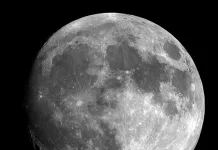
An unassuming brown pebble, found more than a decade ago by a fossil hunter in Sussex, has been confirmed by researchers from The University of Manchester and the University of Cambridge as the first example of fossilised brain tissue from a dinosaur.
The fossil is most likely from a species closely related to Iguanodon – a large herbivorous dinosaur that lived during the Early Cretaceous Period about 133 million years ago – and displays distinct similarities to the brains of modern-day crocodiles and birds.
The results are reported in a Special Publication of the Geological Society of London, published in tribute to Professor Martin Brasier of the University of Oxford, who died in 2014.
Finding fossilised soft tissue, especially brain tissue, is very rare, which makes understanding the evolutionary history of such tissue difficult.
According to the researchers, the reason this particular piece of brain tissue has been so well-preserved is that the dinosaur’s brain was essentially ‘pickled’ in a highly acidic and low-oxygen body of water – similar to a bog or swamp – shortly after its death. This allowed the soft tissues to become mineralised before they decayed away completely, so that they could be preserved.
The researchers used Scanning Electron Microscope (SEM) techniques in order to identify the tough membranesthat surrounded the brain itself, as well as strands of collagen and blood vessels.
Structures that could represent tissues from the brain cortex also appear to be present. The structure of the fossilised brain showed similarities with the brains of modern-day descendants of dinosaurs, namely birds and crocodiles.
In typical reptiles, the brain has the shape of a sausage, surrounded by a dense region of blood vessels and thin-walled vascular chambers that serve as a blood drainage system. The brain itself only takes up about half of the space within the cranial cavity.
In contrast, the tissue in the fossilised brain appears to have been pressed directly against the skull, raising the possibility that some dinosaurs had large brains.
However, the researchers warned against drawing conclusions about dinosaur intelligence, as it is most likely that the brain of this dinosaur collapsed and became pressed against the bony roof of the cavity as it decayed.














